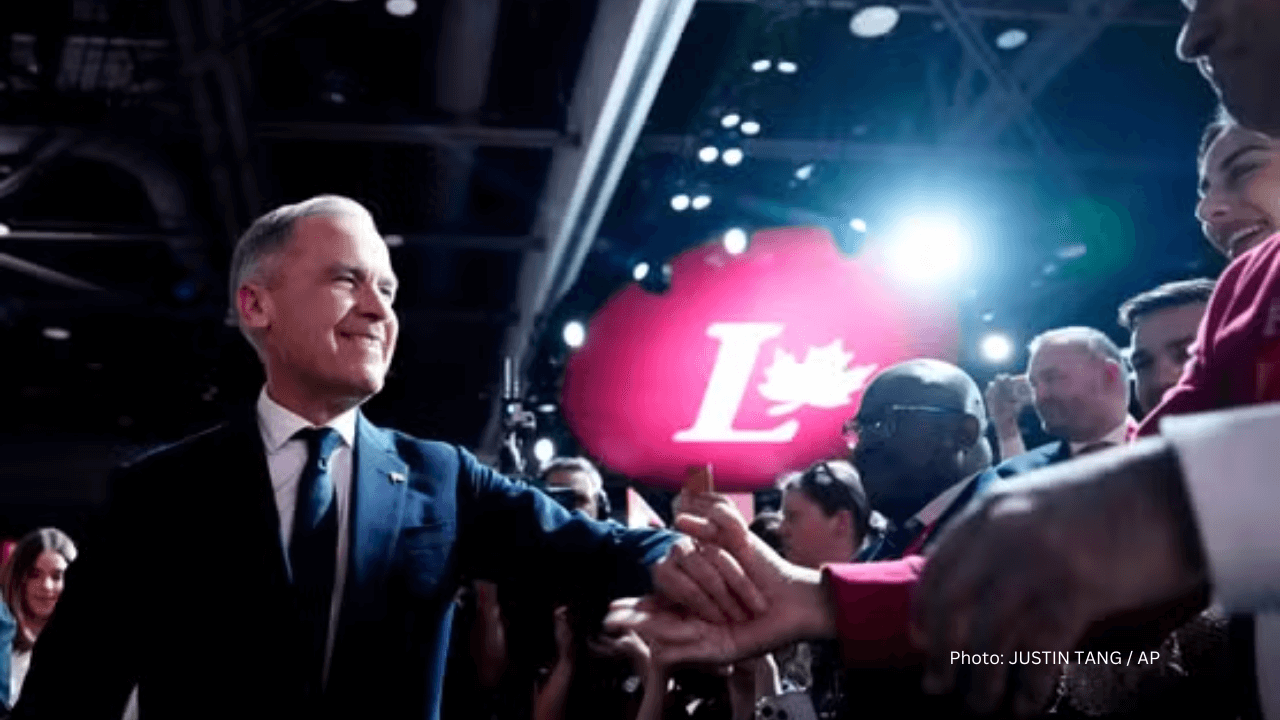The Rise of Mark Carney and a New Political Direction in Canada
Kazi Nishat Aunjum, | 31 March 2025
In the final days of March 2025, Canada entered a new political era defined by a leadership transition, renewed questions of national sovereignty, and intensified friction with the United States. The departure of Prime Minister Justin Trudeau, who had led the country since 2015, marked the end of a chapter characterized by progressive social policies and a strong emphasis on multilateralism. Trudeau's resignation on January 6, 2025, came amid mounting domestic dissatisfaction and escalating external pressures, most notably a resurgent trade conflict with U.S. President Donald Trump. Faced with this crisis, the Liberal Party turned to Mark Carney, an internationally respected economist and central banker, to lead both the party and the country through a period of extraordinary uncertainty.
Mark Carney’s elevation to Prime Minister was a highly symbolic moment, signaling a shift in both tone and substance in Canadian politics. Though he had never held elected office, Carney brought with him a formidable reputation built as the former Governor of the Bank of Canada and the Bank of England. His technocratic pedigree, global experience, and crisis management credentials appealed to a Canadian electorate increasingly anxious about the economic fallout from trade tensions with the United States. Carney’s approach to governance represents a marked departure from Trudeau’sless ideologically progressive and more grounded in institutional expertise and economic pragmatism. Where Trudeau led with a message of inclusive social transformation, Carney’s leadership is defined by a call for national resilience, strategic autonomy, and a sober recalibration of Canada’s economic relationships.
Central to Carney’s vision is the strategic disentanglement of Canada’s overdependence on the U.S. market. At the time of his swearing-in, over 75% of Canada’s exports were U.S.-bound. Trump’s re-imposition of tariffs on Canadian steel, aluminum, and key consumer goods in early 2025 jolted the Canadian economy and exposed the vulnerabilities of this economic reliance. Carney responded with a comprehensive plan to diversify trade partnerships, strengthen the domestic manufacturing base, and increase investments in strategic sectors such as renewable energy, pharmaceuticals, and defense. His emphasis on rebuilding domestic supply chains and expanding export routes through the Atlantic and Pacific reflected both a national security imperative and an economic strategy grounded in diversification and risk management.
Compounding the complexity of Carney’s early tenure was the political arithmetic of a minority government. Following Trudeau’s departure and Carney’s internal selection as party leader, the Liberals held only 167 seats in the House of Commons, three short of a majority. The legitimacy of Carney’s mandate, though strengthened by his appointment, required electoral affirmation. This urgency led to the dissolution of Parliament and the calling of a federal election scheduled for April 28, 2025. In the interim, Carney moved swiftly to assemble a cabinet that reflected both experience and renewal. Notably, his selection of Anita Anand as Canada’s first Hindu Foreign Minister symbolized a commitment to diplomatic sophistication and cultural inclusivity, even as his economic policies charted a more centrist and cautious course.
Carney’s strategy toward the United States has been characterized by firmness tempered with pragmatism. In contrast to Trudeau’s more conciliatory tone with past U.S. administrations, Carney has been unequivocal in defending Canadian sovereignty. His now widely quoted declaration, “Canada is not for sale”, delivered in response to Trump’s inflammatory suggestion that Canada consider annexation, underscored a new posture in Ottawa: assertive, economically defensive, and diplomatically measured. His upcoming bilateral meetings, particularly his early May visit to Washington, are aimed at resetting the bilateral dialogue while preparing Canada for a longer-term strategic pivot.
Domestically, Carney’s initial policy moves suggest a careful balancing act. A proposed tax cut for middle-income earners, offering up to C$800 in relief for dual-income households, signals an attempt to soften the economic blow of U.S. tariffs while stimulating demand. Simultaneously, the government is proceeding with reduced immigration targets, originally announced under Trudeau, suggesting continuity on population planning but with more attention to economic integration. Where Trudeau's social agenda had sought bold expansion of services and rights, Carney's is likely to be more cautious, prioritizing fiscal discipline and economic competitiveness in an increasingly hostile global environment.
Internationally, Canada’s posture under Carney is expected to shift toward strategic hedging. While reaffirming alliances with NATO and traditional partners, Carney’s foreign policy will emphasize trade diversification with Europe, Latin America, and key Indo-Pacific economies. As Canada prepares to host the G7 summit in Alberta in June 2025, Carney is poised to use the platform to showcase a redefined Canadian diplomacy, one that blends firm national interest with selective globalism and economic statecraft.
Canada’s political transformation in March 2025 signals more than just a change in leadership; it marks a recalibration of the country's priorities at a time of intense domestic and international flux. Mark Carney’s rise reflects a popular appetite for competence, calm, and strategic thinking. His government faces the formidable task of navigating economic turbulence, securing electoral legitimacy, and redefining Canada's place in a shifting global order. Whether Carney’s pragmatic centrism can hold in a polarized political climate remains to be seen, but for now, he embodies a national project rooted in resilience, realism, and renewal.
Kazi Nishat Aunjum is a Student, Peace and Conflict Studies, Dhaka University
Views in this article are author’s own and do not necessarily reflect CGS policy.
